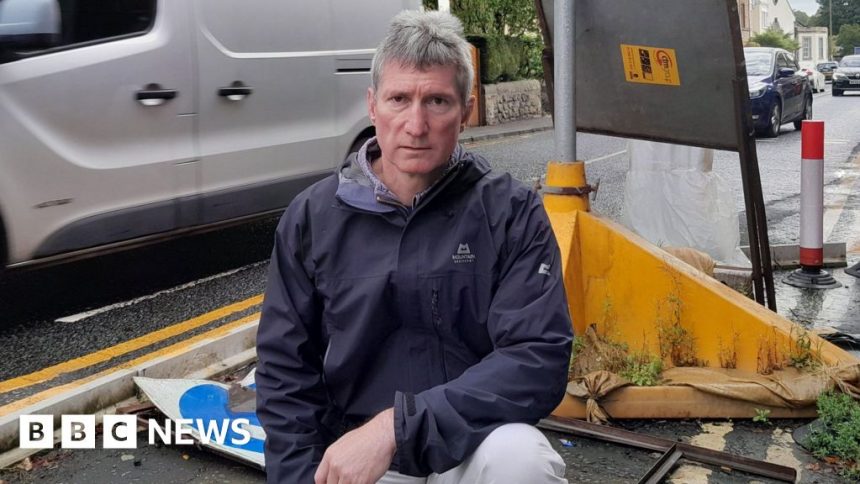Car numbers rise despite ‘expensive’ low traffic scheme
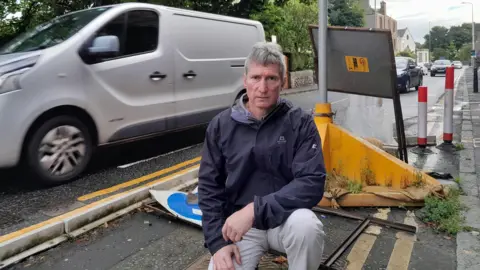 Peter Roberts
Peter RobertsCampaigners are calling for an £800,000 traffic-reducing scheme to be scrapped after the number of cars in their Edinburgh suburb increased after it launched.
Peter Roberts, the vice-chairman of Accessible Corstorphine for Everyone, said the low traffic neighbourhood had been an “expensive failure” that had also created safety hazards.
City of Edinburgh Council confirmed traffic had increased by 6.5% since the pilot started in Corstorphine in May 2023.
However, it said there had been a 9.2% fall in traffic on streets around the local primary school, which had been its aim.
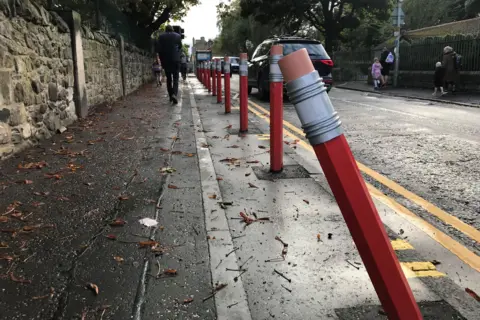 Peter Roberts
Peter RobertsMr Roberts, 57, said the streets around the school were home to only 300 of the 22,000 people living in the neighbourhood.
He said: “It’s talking about reduced traffic on a tiny number of streets and assuming all children live on those streets, which clearly they don’t – they walk from much further afield.”
The pilot scheme involves traffic restrictions, a bus gate, wider pavements and more seating and planting.
Councillors are due to vote on whether to make it permanent at a committee meeting on 24 September.
Mr Roberts, a father of two who has lived in Corstorphine for 32 years, said the wider pavements now had more clutter and bollards on them, and that this defeated the purpose of the scheme.
“It’s an absolute shambles and needs to be scrapped,” he said.
“The street clutter that now blights the area is dangerous and there have been multiple incidents of pedestrians tripping and falling.
“It has not made Corstorphine safer, it has made it less accessible and hazardous.”
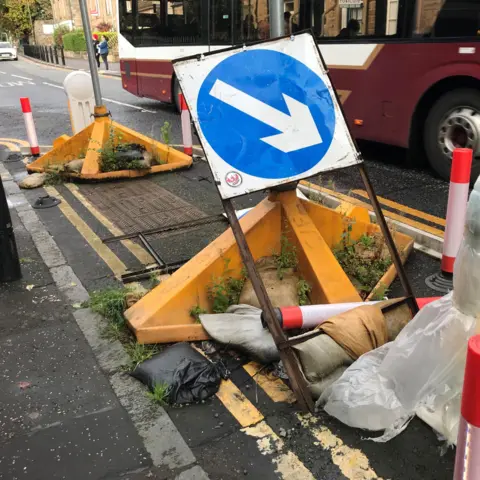 Peter Roberts
Peter RobertsThe monitoring carried out by the council said there had been a fall in traffic speeds in the area, as well as a 3.6% increase in cycling and a 2.2% increase in walking.
It also found an overall increase in the number of children using active travel to go to and from primary schools in the area. A rise of 3% means that 71% of pupils now walk or cycle to school.
But Mr Roberts said: “The reduction in the few streets that they have managed to improve has come at the cost of displaced traffic and further congestion on all of the surrounding streets.
“So nobody is actually enjoying any net benefit unless they live literally right at the back of the primary school.”
He added that the increase in traffic in the low traffic neighbourhood was 0.5% higher than the average rise in the whole of western Edinburgh.
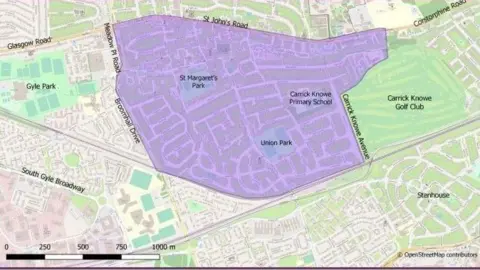 City of Edinburgh Council
City of Edinburgh CouncilHe also said he believed the survey of 312 people by a market research company was too small.
“They have used what we believe is a biased survey to get the latest set of public opinion,” said Mr Roberts.
He said the research had only asked for the views of pedestrians, but excluded motorists, business owners and those who rely on visits from carers.
“They have only taken opinion from people who are likely to see benefit and a lot of the questions were leading questions.
“Even then they have barely managed to get 50% of people saying it’s a good idea.
“We believe the council’s view of public opinion is highly skewed by the nature of the way it has taken those opinions.”
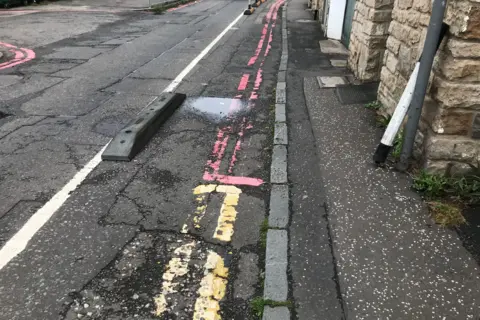 Peter Roberts
Peter RobertsStephen Jenkinson, City of Edinburgh Council’s transport and environment convener, said the project was about making Corstorphine’s streets and outdoor spaces safer and better to spend time in.
“It’s good to see that there has been a decrease in traffic on streets around the local primary school,” he said.
“I’m pleased parents now say they feel happy letting their children walk or cycle to school. This shows that some of the changes made around the area have made a positive difference.”
He said council officials had done “a huge amount of work” on the project over the last year.
“It is important to listen to the views of local residents and I’m looking forward to discussing the results of this trial a committee,” he added.




